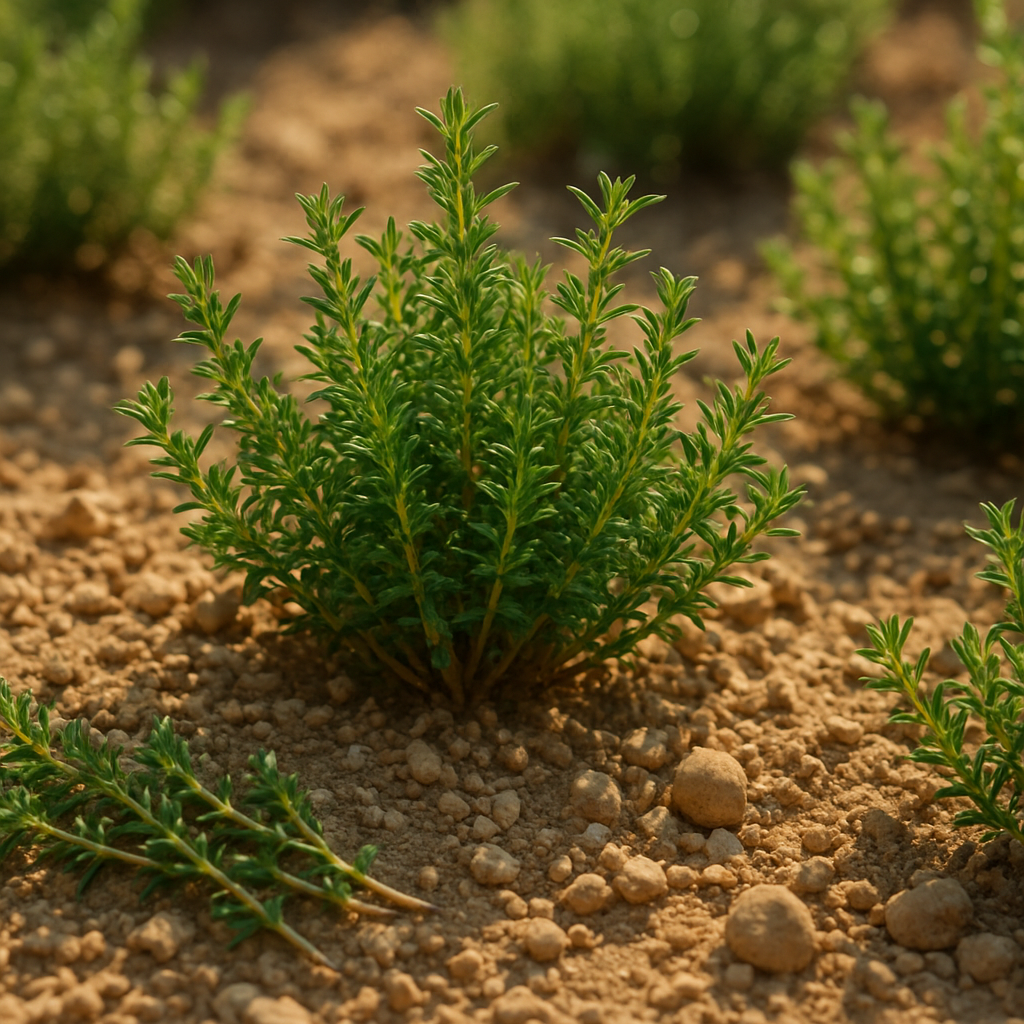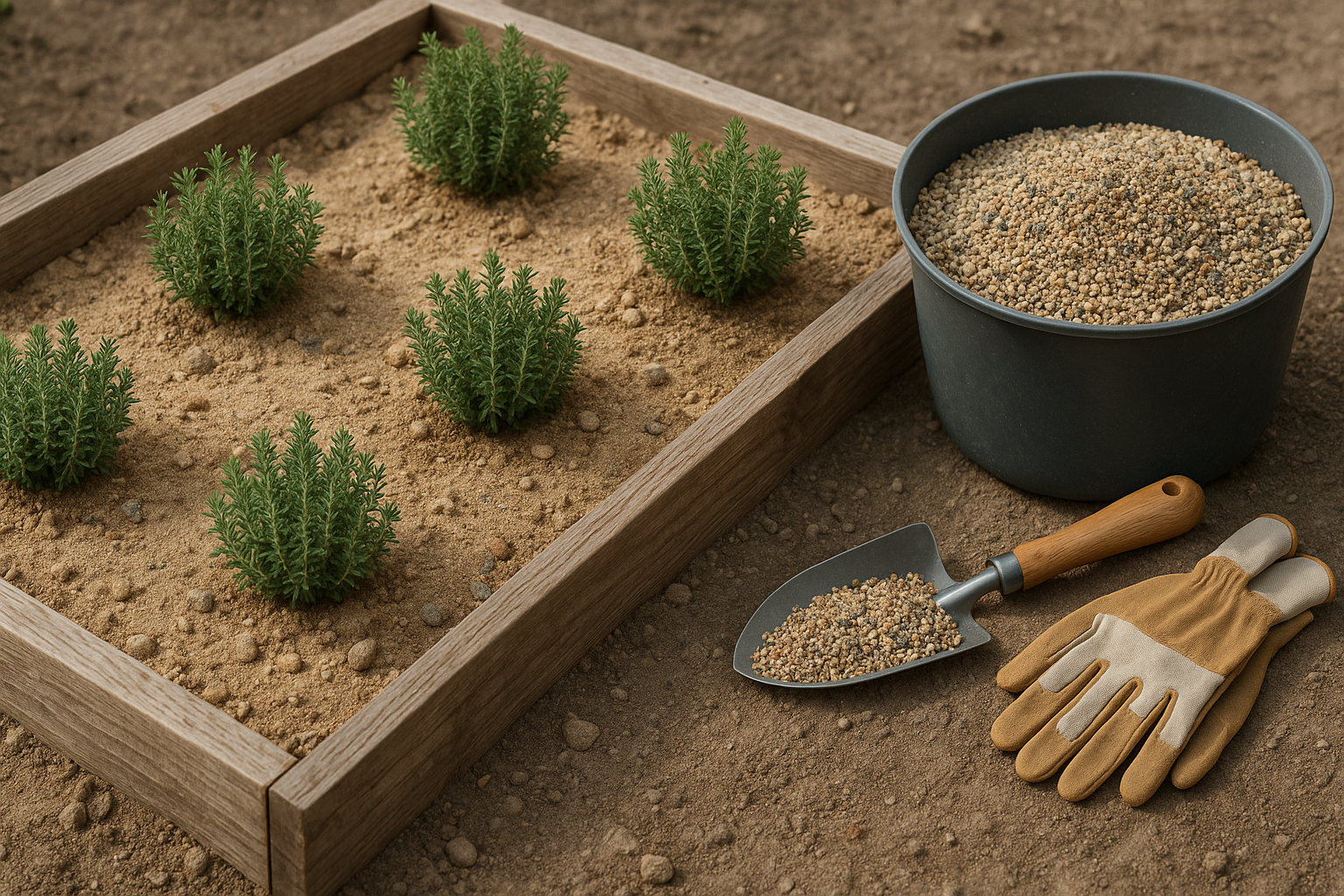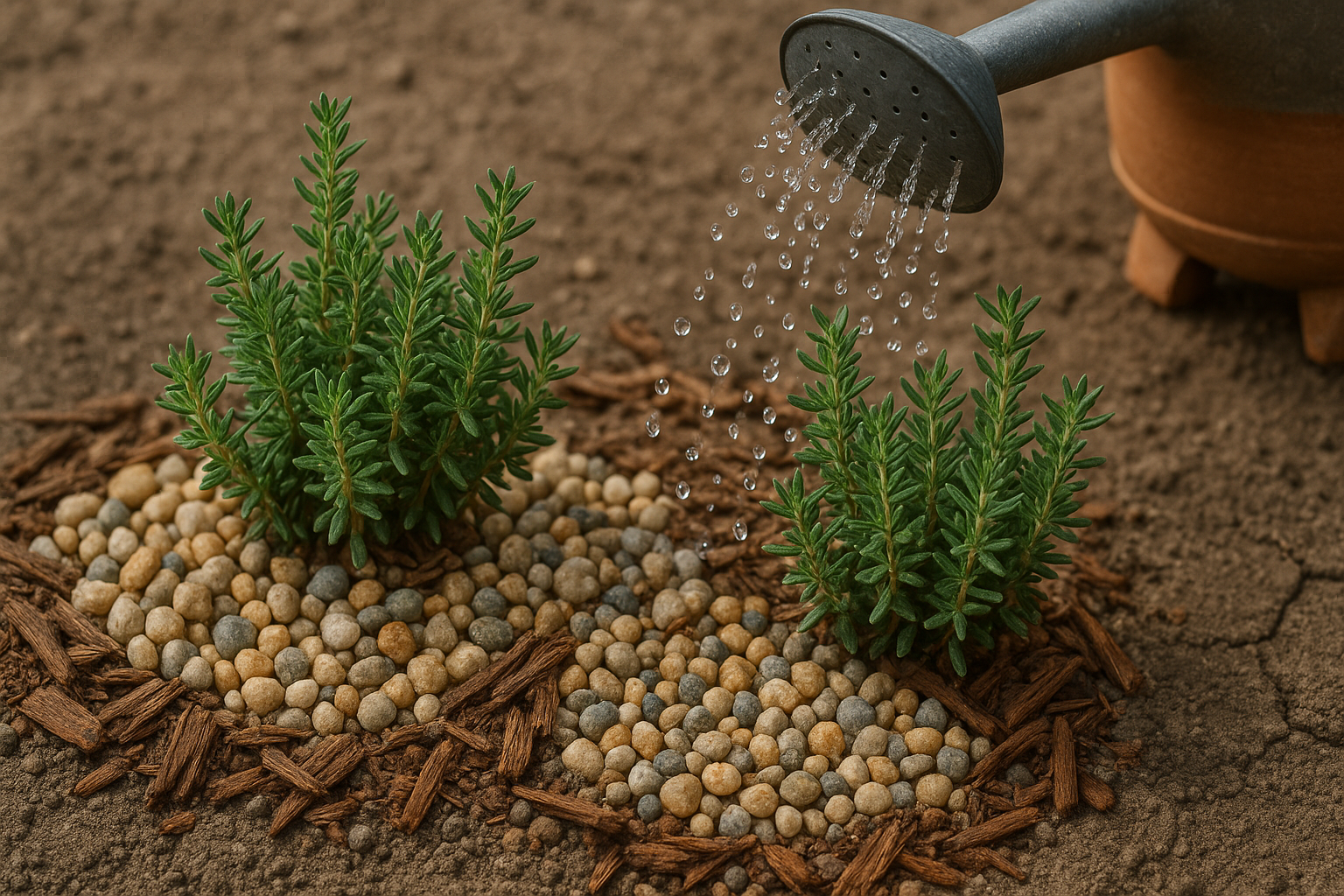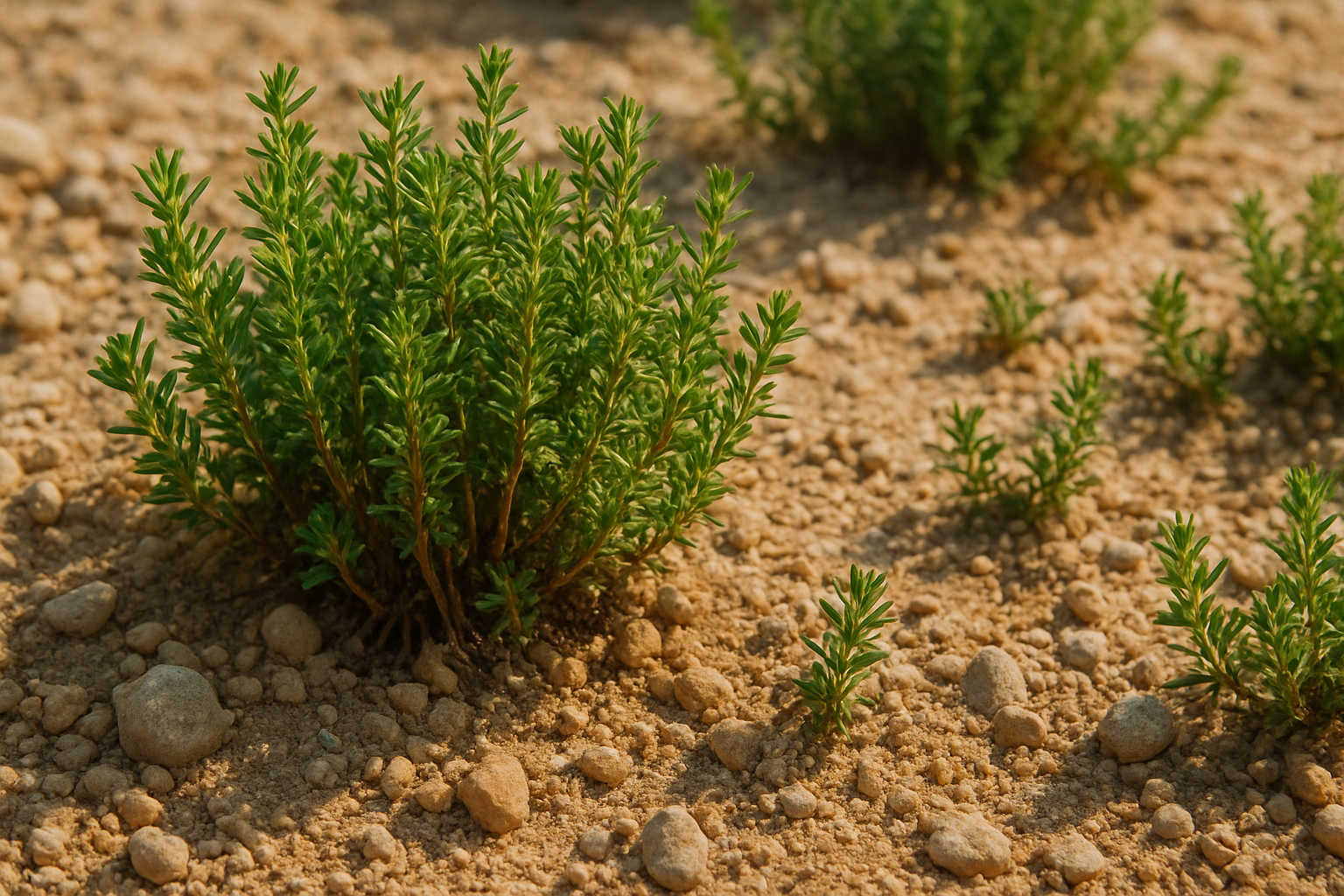Understanding Thyme’s Heat Tolerance

Thyme is naturally adapted to hot, dry conditions thanks to its Mediterranean roots, making it a standout choice for gardeners in warm climates. This hardy herb thrives with plenty of sunlight—ideally six or more hours each day—and doesn’t mind high temperatures that would stress other plants.
Its small, aromatic leaves are designed to minimize water loss, helping thyme survive and even flourish during summer heatwaves. Thyme also needs well-draining soil; soggy roots can spell trouble, so plant it in raised beds or rocky patches if possible.
Among the many varieties, common thyme (Thymus vulgaris) is especially heat-tolerant and reliable for cooking. Lemon thyme brings a citrusy twist but still tolerates the sun just as well, while creeping thyme works as a flavorful groundcover, perfect for blanketing hot, sunny areas.
No matter the variety, thyme is an easygoing herb that loves the heat and adds fresh flavor to your kitchen.
Choosing the Best Spot and Soil

When planting thyme, pick the sunniest location you can find—this herb loves at least six hours of direct sunlight daily, whether it’s in a garden bed or a container on your patio. Good drainage is crucial, as thyme can’t stand wet roots.
Look for loose, sandy, or even slightly rocky soil, which helps mimic the plant’s Mediterranean origins and keeps water from pooling around the roots. If your native soil is heavy or clay-like, mix in a generous amount of coarse sand, fine gravel, or perlite to improve drainage.
For container thyme, use a cactus or succulent potting mix, or blend regular potting soil with sand and gravel in equal parts. In humid or rainy climates, elevate garden beds or use clay pots, as these allow excess water to escape more easily and keep thyme healthy by warding off dreaded root rot.
Planting Thyme for Hot Success
To set your thyme up for a hot summer success, aim to plant it in early spring—once the danger of frost has passed but before the days get too warm. This timing allows young plants to establish strong roots before facing the full force of summer heat.
You can grow thyme from seeds, though they take several weeks to germinate. Sow them shallowly indoors about 6-8 weeks before your last expected frost, then transplant them outside. For a faster start, try stem cuttings: simply snip a healthy 3-4 inch sprig, strip the lower leaves, and root it in moist soil.
Nursery-started thyme plants are the easiest option if you want instant greenery and less guesswork. Whichever method you choose, plant thyme about 12-18 inches apart to allow plenty of airflow between plants. Good spacing helps prevent fungal diseases and ensures each plant can cool itself more effectively during summer’s hottest weather.
Smart Watering and Mulching Techniques

Thyme’s natural drought tolerance makes it perfect for hot, dry gardens, but overwatering—especially in the heat—can quickly cause root rot. The key is to let the soil dry out between waterings. During mild weather, a deep soak once every 10–14 days is plenty. When temperatures soar, check the soil moisture with your finger; water only if the top inch is bone-dry. Early morning is the best time to water, minimizing water loss and fungal issues.
For mulch, skip heavy organic layers that trap heat and moisture. Instead, use materials like pea gravel or a thin layer of shredded bark. These choices keep weeds down and roots cool without overheating or suffocating the plant. In containers, make sure pots drain well and raise them off hot surfaces.
Remember: for thyme, less is often more; keeping things a little dry helps this resilient herb truly thrive.
Managing Pests and Heat-Related Challenges
Hot summers often turn gardens into a haven for pests like spider mites, aphids, and whiteflies, all of which thrive in dry, warm conditions. Diseases such as powdery mildew and blight can also spread quickly when plants are stressed by heat.
To manage these issues organically, try introducing beneficial insects like ladybugs or using neem oil sprays. For fungal problems, proper airflow is key—space your plants out and prune regularly to increase ventilation, making it harder for fungi to settle on wet leaves.
During heatwaves, wilting and leaf curl can occur as plants lose moisture rapidly. Mulching with straw or wood chips helps retain soil moisture, and watering early in the morning gives roots a chance to absorb water before the heat peaks.
Combining these simple measures can keep your plants healthy, even when temperatures soar and pests seem relentless.
Harvesting and Enjoying Thyme
For the most flavorful thyme, harvest in the morning just after the dew dries, when the essential oils are most concentrated. Snip sprigs right before the plant blooms, using sharp scissors to cut above a leaf node—this encourages healthy regrowth.
In hot climates, trim lightly and often rather than all at once, since intense sun can stress the plant.
To store your thyme, rinse sprigs and let them air-dry on a towel in a cool spot, away from direct sunlight. Once dry, bundle and hang them upside down, or, for fresh use, tuck sprigs into a damp paper towel inside a zip-top bag in the fridge, which keeps them vibrant for up to two weeks.
In the kitchen, fresh thyme adds earthy depth to roasted vegetables, grilled chicken, or homemade bread; simply strip the leaves from the woody stem and sprinkle them over dishes or stir into soups for a fragrant, herby kick.
